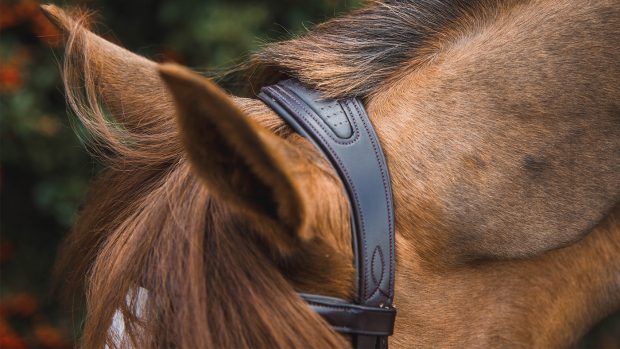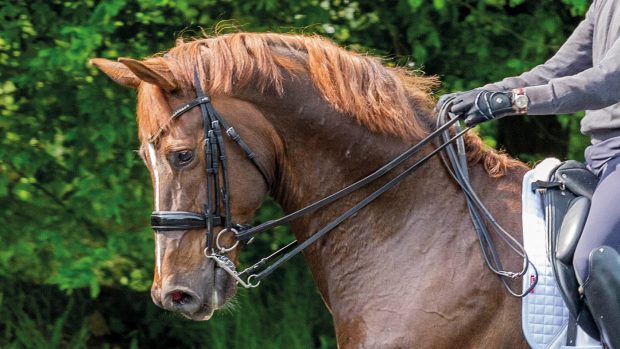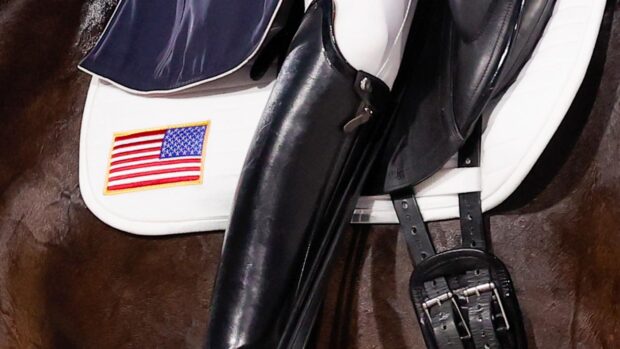When choosing a bridle for your horse there is now more choice than ever. From the latest rolled patent leather complete with bling browband for the dressage arena to Australian nut brown bridles with high ring grackle nosebands in the showjumping ring, there is something to suit every horse and rider.
But with so much choice, where do you start? Bridles usually come in fairly standard pony, cob and full sizes, in either snaffle (single cheeks and reins) or double (with slip head and double reins) styles. But with a bit of extra thought it is possible to select a bridle that not only fits, but also improves the appearance of your horse’s head.
H&H hunting editor Catherine Austen says: “I like bridles to be plain, dark brown leather. The width of the leather should depend on the size of the horse’s head and its type. Wide, flat leather suits cobs and hunters with ‘handsome’ rather than pretty heads, while Thoroughbreds, horses with fine heads and ponies look good in narrower leather with lighter stitching.”
If you are competing you need to check your bridle complies with competition rules. For example grackle nosebands are not allowed in pure dressage, but are acceptable in the dressage phase of eventing, while double bridles are only allowed from elementary dressage upwards. So if you are not sure, consult your rulebook before going shopping.
Dressage divas
H&H dressage editor Alice Collins loves patent leather and a bit of bling for her sport, believing that the right bridle can enhance the overall appearance of any combination.
“My perfect competition bridle would be rolled black leather,” she says. “I don’t want — or need — a throatlash as it makes a short neck look even shorter. Most throatlashes are far too long so flap around and if you can tighten it enough to ‘keep the bridle on’ as they are designed to do, it may interfere with the horse’s ability to flex.
“White padding on a wide cavesson (double bridle) or flash noseband (snaffle bridle) helps break up a face with no white markings, as does a curved browband. I like either rolled browbands or a thin curved browband with some bling — but not too wide. You don’t need to blind the judge as you come down the centre line.”
The right reins
Some bridles come complete with reins, but they may not be of your preferred style so always check before you make your purchase. Some shops may be prepared to sell you a bridle without reins or swap the reins for a small additional charge, so it’s worth checking.
H&H eventing editor Pippa Roome prefers rubber reins for any jumping including cross-country.
“I like reins that buckle on to the bit, rather than using billets, as they are less likely to come undone,” she says. “But I would have a pair of stud billet reins for dressage as they look smarter. And don’t forget to take off your martingale stops for dressage if using the same pair of reins for all three phases.”
Alice likes her reins to match her bridle and be half-lined with rubber for added grip without being bulky. “Half-lined reins shouldn’t have a notch of leather covering the area where the rubber starts. It looks ugly,” she says.
H&H news editor and side saddle aficionado Flora Watkins likes a traditional pair of double reins. “One laced leather rein and one plain leather rein on a flat show hunter bridle would fit my needs,” she says.
Which noseband?
While there are some competition rules to consider regarding nosebands, in general they should be chosen based on your horse’s needs.
It is currently common for new bridles to come with flash nosebands as standard. H&H staff members have found it difficult to find a new bridle with a simple raised cavesson noseband, but some manufacturers have made the loop detachable, giving you the ultimate in flexibility, although shop around as appearances vary. We don’t advise wearing a flash noseband without the flash strap, or trying to cut the loop off yourself. Both will end up looking untidy.
Padded head pieces that allow room for the horse’s ears are a popular choice among the H&H team, while a major bugbear are keepers that are either too big (leaving leatherwork flapping in the breeze) or too small (making the bridle difficult to take on and off).
So whether you want something traditional suitable for the hunting field, or something more fashionable for the competition arena, we hope our guide has helped you to decide on the perfect bridle for you horse.





